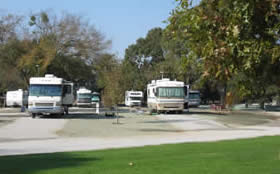by Matt Corrion
On March 15, 2012, facilities across the United States must comply with the revised ADA (Americans with Disabilities Act) design standards adopted in the 2010 Standards for Accessible  Design.
Design.
The 2010 Standards set minimum requirements for newly designed and constructed or altered State or local government facilities, public accommodations, and commercial facilities to be readily accessible to and usable by individuals with disabilities.
I have reviewed the new standards, and they are pretty extensive. Property owners and designers should be aware of some of the changes that will be required when constructing or altering a facility.
The provision requiring accessible means of entry/exit for swimming pools has gained a lot of attention. On March 15th, the US Attorney General signed an extension of 60 days for this particular provision, while also opening up a public comment period.
The swimming pool provision, along with other key new provisions, as taken from the ADA website, include:
2. Recreational Boating Facilities (Sections 235, 1003)
If boat slips are provided at a boating facility, the minimum number that must be accessible depends upon the size of the facility. Accessible boat slips must be dispersed throughout the various types of boat slips.
Where boarding piers are provided at boat launch ramps, at least 5% (but no fewer than one) must be accessible. Gangways that are part of a required accessible route are to be accessible, subject to certain enumerated exceptions.
4. Fishing Piers and Platforms (Sections 237, 1005)
Newly designed, newly constructed, or altered fishing piers must provide accessible routes, subject to the same exceptions permitted for gangways. At least 25% of guardrails or handrails must be no higher than 34 inches and must be dispersed. Clear floor or ground space must be provided at each accessible railing, and turning space must be provided on the pier.
5. Golf Facilities (Sections 238, 1006)
Newly constructed and altered golf facilities must have either an accessible route or golf car passages with a minimum width of 48 inches connecting accessible elements and spaces within the boundary of the golf course. An accessible route must be provided to the golf car rental area, bag drop-off areas, and other elements that are outside the boundary of the golf course. One or two teeing grounds (depending on the total number provided) per hole must be accessible.
If weather shelters are provided, a golf car must be able to enter and exit the shelters. Certain percentages of practice teeing grounds, practice teeing stations at driving ranges, and putting greens must be accessible.
6. Miniature Golf (Sections 239, 1007)
At least fifty percent of all holes on a miniature golf course must be accessible. These accessible holes must be consecutive, and they must be on an accessible route. The last accessible hole must be on an accessible route that connects to the course entrance or exit without going back through other holes.
7. Play Areas (Sections 240, 1008)
Play areas designed, constructed, and altered for children ages two and over in a variety of settings, including parks, schools, childcare facilities, and shopping centers, are covered.
Accessible ground and elevated play components, accessible routes, ramps and transfer systems (typically a platform or transfer steps), and accessible ground surfaces must be provided.
8. Swimming Pools, Wading Pools, and Spas (Sections 242, 1009)
Accessible means of entry/exit are required for swimming pools. Such accessible means of entry include a pool lift or sloped entry, and either a transfer wall, transfer system, or pool stairs. Wading pools must provide a sloped entry, and spas must provide a pool lift, transfer wall, or transfer system. Wave action pools, leisure rivers, and sand bottom pools where user access is limited to one area shall not be required to provide more than one accessible means of entry, either a pool lift, sloped entry, or a transfer system.
This is the official blog of Outdoor Design Group, Colorado Landscape Architects. For more information about our business and our services, click here.
Related Posts:
by Guest Writer
 This is a guest post by Bud Surles. The owner of Bud Surles Consulting Group, Bud has over 30 years of award winning parks, resort, and environmental management and planning experience. He has won national awards in both the public and private sectors in the design and management of resort and public recreation areas. Outdoor Design Group has recently partnered with Bud Surles Consulting Group to provide planning and landscape architecture services for resort projects throughout the country.
This is a guest post by Bud Surles. The owner of Bud Surles Consulting Group, Bud has over 30 years of award winning parks, resort, and environmental management and planning experience. He has won national awards in both the public and private sectors in the design and management of resort and public recreation areas. Outdoor Design Group has recently partnered with Bud Surles Consulting Group to provide planning and landscape architecture services for resort projects throughout the country.
New Times Demand New Ideas
Most of us can fondly remember the housing bubble of the first decade. It seems that all you had to do was “build it and they would come.” Billions were invested in well thought out and not so well thought out housing developments, sub-divisions, and second home resort complexes. Each one seemed to build upon the success of the other. Of course, all that came to a terrifying close in 2008, and today the landscape is littered with evidence of the failure of over-development. People were millionaires one day and bankrupt the next. Individuals were secure in an ARM one day and facing foreclosure the next. Good jobs were lost and economics were drastically turned upside down across our land.
Today, many well-conceived housing developments of a few years ago lay dormant on the landscapes of lakes, rivers, mountain areas, and beaches. Lots cannot sell and developers are hanging on waiting for better times to return. However, economic indicators give little hope for that to happen within the staying power of many. But there is good news. It requires a change of vision, but there are opportunities to convert the investment in planning, roads, and infrastructure into a meaningful and profitable cash flow. It is time developers who are in the position of “hanging on” to re-think their investments and look to converting their developments into RV and Resort properties.
(more…)
Related Posts:
by Matt Corrion
As tax revenues continue to drop, towns and municipalities everywhere are trimming their budgets and looking for places to make cuts- in some cases by converting paved roads to gravel.
Here are excerpts from a recent article I came across at the Denver Post (Clarke Canfield, AP), on this emerging trend:
Ever since the invention of the automobile, paved roads have meant progress. Now some cash-strapped towns and counties are finding progress too expensive, and they are tearing up battered roads and putting down gravel.
The high price of pavement and the sour economy have driven municipalities in states such as Michigan, Pennsylvania, Indiana and Vermont to roll up the asphalt — a mile here, a few miles there, mostly on back roads — rather than repave. (more…)
Related Posts:
by Matt Corrion
UPDATE: Collecting Rainwater in Colorado will be legal beginning on August 10, 2016. Please see our new post regarding the use of Rain Barrels in Colorado, and House Bill 16-1005.
Two new legislative bills were passed in Colorado this summer that seem to be causing some confusion regarding water rights. Senate Bill 09-080 and House Bill 09-1129 allow for the collection of rainwater- but only in very limited circumstances.
Many businesses and homeowners are looking for ways to be more sustainable, to save water, and to conserve resources to help their bottom line. I have been surprised to find that many people are not aware that collecting rainwater- even in a simple “rain barrel” system from your roof for use in watering a garden, is illegal in Colorado.
Historical Precedent
I think the Colorado Division of Water Resources website summarizes well the historical precedent in layman’s terms: “Colorado water law declares that the state of Colorado claims the right to all moisture in the atmosphere that falls within its borders and that ‘said moisture is declared to be the property of the people of this state, dedicated to their use pursuant’ to the Colorado constitution. As a result, in much of the state, it is illegal to divert rainwater falling on your property expressly for a certain use unless you have a very old water right or during occasional periods when there is a surplus of water in the river system. This is especially true in the urban, suburban, and rural areas along the Front Range. This system of water allocation plays an important role in protecting the owners of senior water rights that are entitled to appropriate the full amount of their decreed water right, particularly when there is not enough to satisfy them and parties whose water right is junior ro them.” (more…)
Related Posts:
 Design.
Design. This is a guest post by Bud Surles. The owner of
This is a guest post by Bud Surles. The owner of